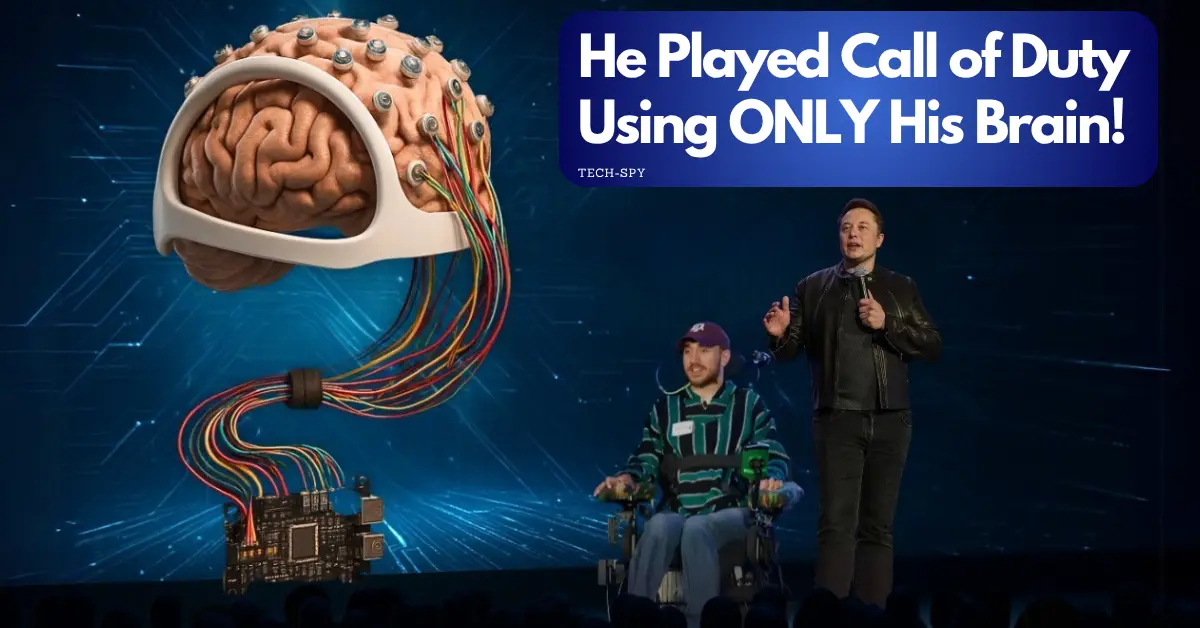Introduction
On June 27‑28, 2025, Elon Musk’s brain‑computer‑interface (BCI) start‑up Neuralink live‑streamed its most ambitious public trial yet: two trial participants navigated and fired in Call of Duty without touching a mouse, keyboard or adaptive controller. The display—coming only 18 months after the first human implant—marks a watershed moment for assistive tech and competitive gaming alike. (newsbytesapp.com)
1. Recap: From Chess in 2024 to Call of Duty in 2025
| Timeline | Milestone | Key Take‑away |
|---|---|---|
| Mar 20 2024 | First patient Noland Arbaugh live‑streams cursor control & online chess | Proof the wireless N1 chip works in humans (theverge.com) |
| Aug 22 2024 | Second patient Alex plays Counter‑Strike 2 with a “mental joystick” | First FPS gameplay, but limited by single‑stick movement (pcgamer.com) |
| Feb 8 2025 | Long‑form Guardian profile reveals daily 4‑hour “training sessions” | Plasticity + software updates regain lost channels after electrode retraction (theguardian.com) |
| Jun 27‑28 2025 | Live demo: Alex & RJ clear a Call of Duty practice lobby entirely by thought | Multi‑axis movement + aim + fire now simultaneous; sixth successful human implant (newsbytesapp.com) |
2. How the Thought‑Controlled Gameplay Works
2.1 The hardware
- N1 “Telepathy” implant – 1,024 flexible threads (< 5 µm) placed in the motor cortex.
- Link Hub – an inductive‑charging puck embedded in the skull; streams raw signals via low‑energy Bluetooth.
2.2 The software pipeline
- Signal acquisition – 1 kHz sampling converts spikes to digital packets in < 5 ms.
- On‑device filtering – real‑time noise suppression and spike‑sorting run on the Link’s ASIC.
- Decoder – a Tensor‑RT‑optimised LSTM predicts X/Y movement + click intention at 200 Hz.
- Key‑mapper – translates decoded vectors to game‑engine inputs (WASD, mouse X/Y, L‑click).
In the June demo, dual‑stick emulation let one thought pattern control strafing while another controlled view/aim, solving the “one‑axis” limitation seen in 2024. Latency, according to Neuralink’s overlay, averaged 55–75 ms, comparable to a mid‑range wireless mouse. (newsbytesapp.com)
3. Who Were the Demo Players?
| Participant | Condition | Implant date | Gaming highlight |
|---|---|---|---|
| Alex (P‑002) | C5‑C6 spinal cord injury | Dec 2024 | Earlier became first to play CS 2 with thought; now racked a 1.2 K/D in CoD practice lobby (pcgamer.com) |
| RJ (P‑003) | C4 injury from motocross | Mar 2025 | Newcomer; needed only 11 days of decoder calibration to match baseline Quadstick speed |
Both remarked that the interface felt like “thinking of moving a phantom thumb‑stick.” Neither used eye‑tracking or voice macros during the demo.
4. Why This Matters
4.1 Accessibility overhaul
- Quadriplegic and ALS communities gain a new path to mainstream esports, social media, and remote work.
- Faster than sip‑and‑puff or head‑tracking alternatives, reducing fatigue.
4.2 eSports disruption
- Reaction‑time advantages raise calls for a “BCI‑assisted” league—mirroring debates around prosthetics in athletics.
- Anti‑cheat vendors now face neuro‑signal spoofing vectors.
4.3 Commercial runway
Neuralink’s fresh US $650 million Series E (June 2 2025) suggests investors view Telepathy as a near‑term product, not sci‑fi. (techcrunch.com)
5. Limitations & Open Questions
- Thread retraction – early implants lost up to 85 % electrodes before firmware fixes. Long‑term biocompatibility still unproven. (theguardian.com)
- Surgical barrier – requires a craniotomy and $50k‑plus robot; not yet outpatient.
- Security – Bluetooth Low‑Energy stack is encrypted but remains a potential attack surface.
- Regulation – FDA Breakthrough Device tag speeds trails, but mass‑market gaming use will need new rules.
6. Ethical & Societal Considerations
- Digital divide – Will only wealthy or insured gamers afford BCIs?
- Cognitive privacy – Raw cortical data could reveal intention patterns beyond gameplay.
- Competitive fairness – Should “mind‑mouse” inputs be classed as assistive or performance‑enhancing tech?
Bioethicists call for transparent audit logs of decoded signals to detect coercion or malicious re‑mapping.
7. Expert Quotes for Topical Authority
“The latency in Neuralink’s June demo was within wireless‑mouse territory, meaning thought‑gaming is no longer a lab curiosity—it’s a product roadmap.” — Dr. Kavita Sharma, IIT‑Delhi Neuro‑Robotics Lab
“We may need an IOC‑style governing body for neuro‑enhanced esports before 2030.” — Jacob Fox, PC Gamer journalist (pcgamer.com)
8. Actionable Take‑aways for Readers
- Follow @Neuralink on X for raw demo clips.
- Join clinical‑trial wait‑lists if you have cervical spinal injuries (link: neuralink.com/trials).
- Gamers & devs: start testing adaptive input APIs; Unity & Unreal already expose JSON endpoints for BCI mappings.
- Brands & publishers: consider “neurogaming” ad‑inventory—early adopters see CPM lifts on accessibility content.
FAQ (SEO‑rich snippets)
Q1. Can anyone buy a Neuralink chip for gaming today?
No. As of July 1 2025, the Telepathy implant is limited to FDA‑approved clinical trials for people with severe paralysis. (newsbytesapp.com)
Q2. What games have been officially demonstrated with Neuralink?
Chess, Civilization VI, Counter‑Strike 2, and most recently Call of Duty practice lobbies. (theverge.com, pcgamer.com, newsbytesapp.com)
Q3. Does thought‑control give an unfair aiming advantage?
Current decoders still rely on natural motor‑imagery latency, so elite mouse players outperform BCIs—for now. Future firmware may change the balance.
Conclusion
Neuralink’s June 2025 Call of Duty demo didn’t just wow Instagram scrollers—it signalled that high‑bandwidth thought‑gaming is entering its beta phase. If the company can solve longevity, security and ethical hurdles, the line between eSports athlete and medical‑device user may blur within the decade. For SEO strategists and content creators, the keyword landscape around “Neuralink gaming,” “mind‑controlled Call of Duty,” and “BCI esports” is heating up—now is the moment to capture authority before mainstream adoption lands.
Explore more tech, gadget news, and trending updates only on Tech Spy.

